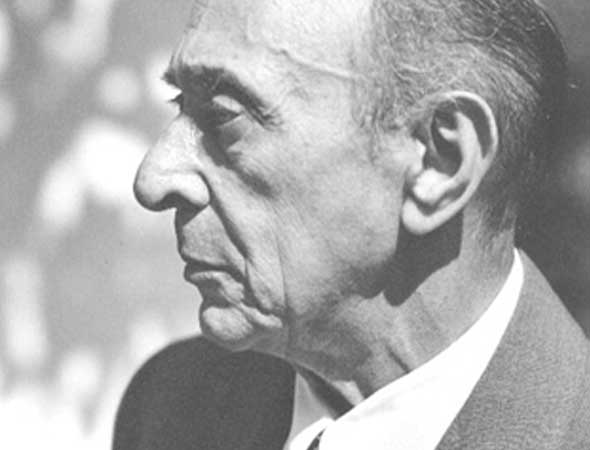SCHOENBERG (arr. Jeff Luke): Peace on Earth
If we acknowledge Arnold Schoenberg as the leader of classical music’s revolutionary “Second Viennese School”—as most musicologists do—then what exactly was the “First Viennese School”? Think of it as all the previous generations of traditional European classical composition, which gave us the glories of Mozart, Haydn and Beethoven, along with the continuously evolving rules of harmony and structure that governed and challenged their creativity. Composers have always tested the rules and explored the new, and in the cafés and concert halls of Vienna, their efforts were cultural patrimony—followed and argued over the way some sports fanatics root for their favorite teams today. As the 19th century drew to a close, Viennese listeners feared that centuries of traditional melody and harmony might leave composers with nothing new to try except atonality, a daunting prospect.
Two particular compositions by Arnold Schoenberg, Verklärte Nacht (1899) and Friede auf Erden (1907), charmed and terrified these listeners. Both are tonal works that are ravishing in their textures and their surging lines, but they also are devoid of familiar harmonic boundaries. The first, “Transfigured Night,” was originally scored for string sextet; “Peace on Earth,” originally for unaccompanied mixed choir, is a motet that references the nativity of Christ and presents a utopian vision for a united and peaceful world. Were the free-flowing harmonics of these compositions the “last stop” on the way to atonality? It seemed possible. Schoenberg’s encyclopedic Harmonielehre, the foundational textbook that loosed atonality upon European and Western music, was first published in German in 1911, just four years after Fried auf Erden; he had been working on it for years. In it, he presents the development of twelve-tone harmonic development much as an engineer might present rules for constructing a building. It seemed that a completely new kind of music might well be at hand. Yet in 1930, Schoenberg turned back to tonality, without entirely repudiating the principles of atonal composition.

Arnold Schoenberg
In early attempts to perform Friede auf Erden a cappella, as written, singers found it almost impossible to keep its meandering, seemingly ungovernable tonalities on track, and Schoenberg was forced to provide an instrumental accompaniment. Though later groups mastered it in performance, it remains on the short list of “most difficult choral works ever composed.” But it has always been admired and even revered, especially by professionals fortunate enough to hear it in live performance—truly a musician’s musical work. One of Schoenberg’s disciples, the composer Anton Webern, famously told him: “Have you even heard your chorus at all? In that case, do you know how beautiful it is? Unprecedented! What a sound!” By the time of Webern’s encomium (1928), the horrors of World War I had disillusioned Schoenberg, who renounced the message of Friede auf Erden in 1923. But as we listen, its ecstatic vision remains persuasive. It has since been arranged in instrumental and vocal scorings.
Arrangement quotation from Jeff Luke:
“I arrange a lot in my spare time, and was searching for a new project while sitting around during the Utah Symphony’s COVID-19 furlough. The country was in a state of unrest, with riots in many cities across America, so when I ran across the Schoenberg title, ‘Peace on Earth’ (Friede auf Erden), I knew what I had to write.
To me the danger in arranging a serious work is that one can detract from an already great piece of music by ignoring, or otherwise missing the point, of the composer’s original intent, so I soon found myself buried in a major project. I had to study the score for hours, listen to as many performances as I could find, and learn the meaning of the poem by Conrad Ferdinand Meyer on which the piece is based. I have always felt that choral music translates well into brass, and I feel that is true for this piece as well. I used a large group of brass players for intense moments, and solo voices for intimate moments. For darker moments I used horn quartet, and for soprano sounds I used high trumpets.
With such a beautiful piece to work with, while being played by my amazing Utah Symphony brass colleagues and conducted by Maestro Fischer, I know it will be enjoyable for all.”











